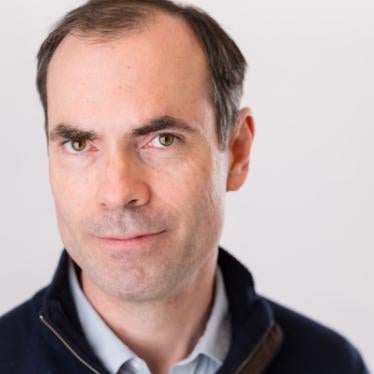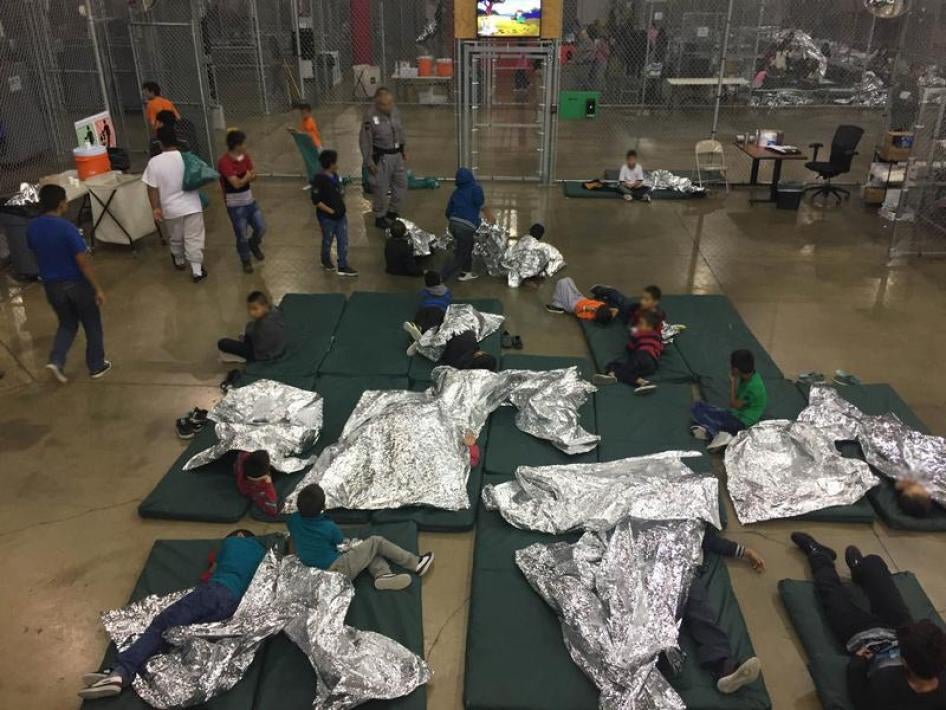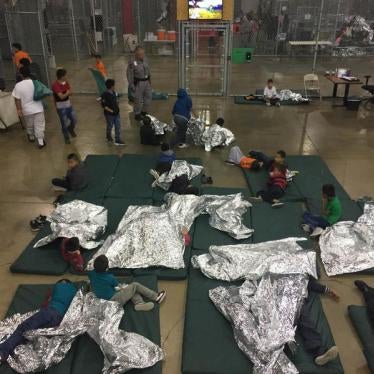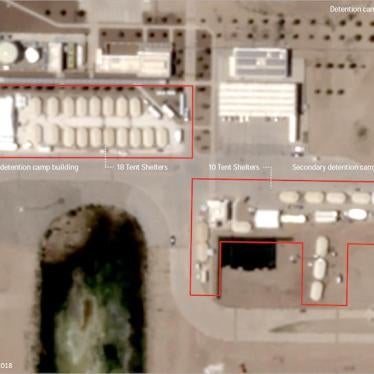During a June 15 visit to an immigration detention center in McAllen, Texas, I watched as hundreds of unaccompanied children—toddlers, teenagers, and all ages in between—sat in caged pens. I saw two boys, about 10 years old, improvise a game with their water bottles, tossing them back and forth. Most of the children huddled under foil blankets. Some looked bewildered and lost.
A few days later, I was in Montreal for a meeting on the mental health consequences of immigration detention. As President Donald Trump signed an executive order to replace his policy of forcible separation of children with indefinite family detention, I was hearing from psychologists about the well-documented harm that immigration detention inflicts.
We know that separating children from their parents, even for relatively short times, has devastating and long-lasting psychological consequences. The adverse impact is more pronounced for children who have fled death threats, violence or other harm, as many of those I interviewed had.
After Trump’s order, U.S. officials sent mixed messages about whether it applied to the 2,300 or more children already torn from their parents’ arms. And Trump himself signalled that nothing can happen until his administration is able to alter existing policy that bars the detention of children for more than 20 days.
And so, at least for a while, the children I saw will remain in their cages.
During the day I was able to observe, I saw how unprepared U.S. Customs and Border Protection (CBP) officials were to handle these children. The only staff I saw were uniformed guards — a handful assigned to a cluster of cages that each held 20 to 30 children. Their interactions with the children consisted almost entirely of barked commands, either for individual children to come forward or for all of the occupants of one penned area to move to another or to line up for food.
At one point in the afternoon, Michelle Brané, a lawyer with the Women’s Refugee Commission, interrupted her interview with a teenage girl to break up a squabble between two 5-year-old boys who had begun to sob. If the lone guard standing 30 feet away noticed that two of his charges had been reduced to tears, he didn’t bother to do anything.
From what I could gather, the children had no place to run around, no access to fresh air or natural sunlight, no books, no toys, no activities of any kind, no comfort or human kindness from anyone charged with their care. CBP officials told us the televisions along the wall showed educational programming, but only one of the five in view was even turned on.
‘None of the children I interviewed knew where their parents were, how long they’d be locked up, or what would happen next.’
As with all CBP holding cells, the lights in the Ursula facility are on 24 hours a day and are never dimmed. The effect is disorienting. When I interviewed a 13-year-old boy in the early afternoon, he asked me whether the sun had risen yet. None of the children I interviewed knew where their parents were, how long they’d be locked up, or what would happen next.
And in fact, what the President’s decision may mean is that the children will continue to be locked up, only along with their parents, a situation that creates its own set of legal and ethical problems. In the past, families awaiting rulings on asylum petitions were usually released with reporting requirements; one such program had a 99 percent compliance rate.
President Trump may be backing away from the extraordinary cruelty he inflicted on thousands of children. But in return for retreating from the unthinkable, he’s asking his country and the world to accept something that’s nearly as damaging. We shouldn’t buy it.










